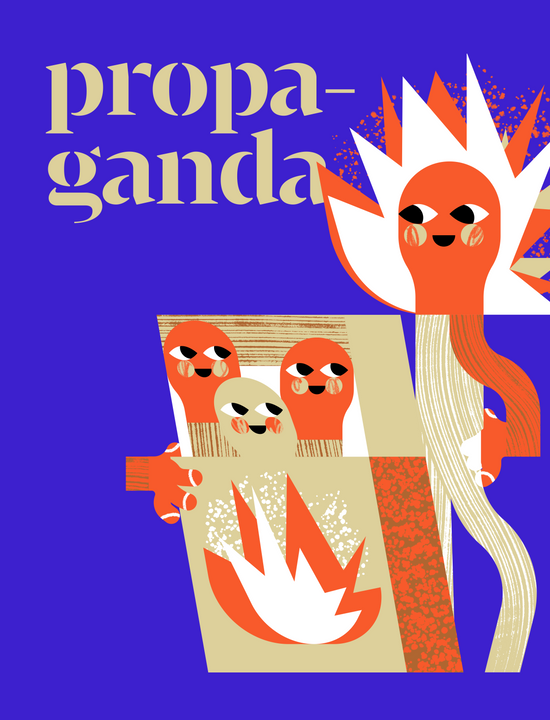9 ideas for lessons around propaganda
Youngsters today encounter propaganda in various forms and through various media. It plays with their emotions, evokes certain ideas or convictions, and tries to influence their behaviour. How can you as a teacher make them resilient? Discover 9 ideas for a stimulating series of lessons on propaganda.
There are various definitions of propaganda, dependent on culture, zeitgeist and context. Let your students explore what these definitions have in common and demonstrate how propaganda evokes strong emotions, simplifies ideas, responds to the needs of its audience and targets opponents.
One form of propaganda can look very different to the next, but there are still ways to recognise propaganda. You’ll often see the same propaganda techniques return. Teach your students to recognise propaganda through various examples, and explain why this is an important skill to master.
Propaganda often spreads virally on social media. That’s why it’s important to consider the potential consequences before you like, share or comment on a message. Assess various examples of propaganda with your students. When should you share a message, and when is it best not to?
Sometimes propaganda is hidden in entertainment, the news, or other unexpected places. That makes propaganda more difficult to recognise. Give your students a taste of the various places they can encounter propaganda, and let them search for examples themselves. Discuss which types of propaganda have a stronger impact on society: propaganda in entertainment, in education, or in the news?
Propaganda tries to bypass critical thinking by evoking strong emotions. Analysing propaganda critically can help students come to better, more rational judgements of the information and ideas presented to them. Teach them which questions to ask themselves when analysing propaganda, and apply this to an example.
To understand propaganda, it’s important that youngsters realise why certain campaigns convince them. By creating propaganda themselves, they can explore which propaganda techniques they have mastered. This can be good preparation for a lesson on the various propaganda techniques.
In the run-up to elections, youngsters will see plenty of slogans and posters appear in the news. Political parties use these to convince voters to vote for them. Show your students various posters in class. Discuss how political parties approach election campaigns, and make your students think about the impact of each poster.
Language as a tool for propaganda cannot be underestimated. Well-chosen words can influence the audience in subtle ways. Politicians, journalists and advertisers often use metaphors or euphemisms to steer their message and the reactions to it. Let your students describe the feeling they get in response to a number of examples, and try to find more neutral alternatives together.
Propaganda is rarely successful immediately. Awareness campaigns only work when the message is repeated often enough, and when it is properly pitched to the target audience. Let the students create a communications and action plan for a good cause, based around the question: how can we make sure the goal is reached within 5 years?
These lessons were developed within the Mind Over Media EU project. The activities complement the learning activities on the online platform.
